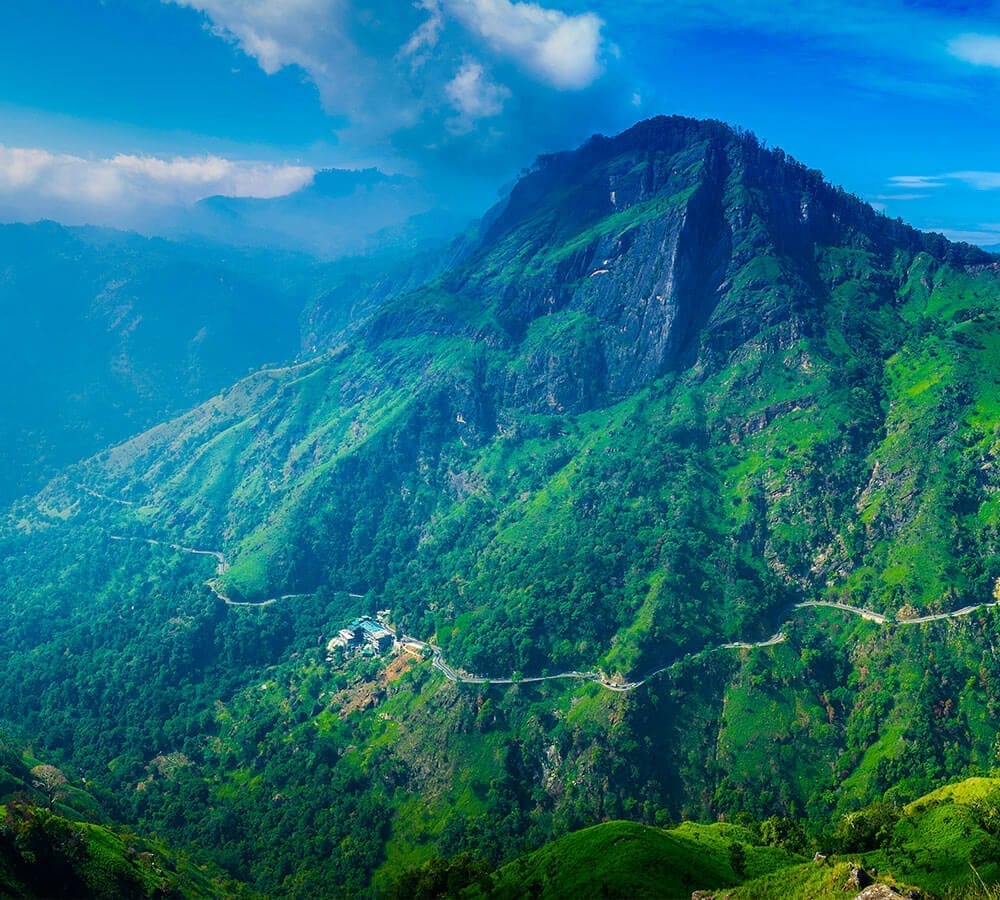
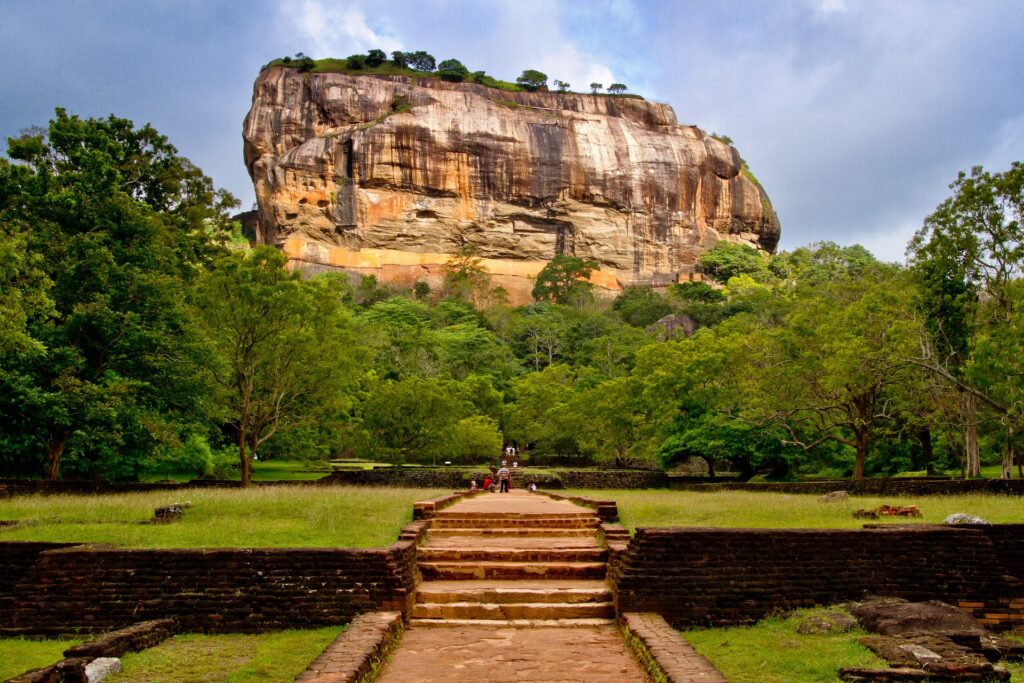
As you embark on your 7-night, 8-day Tour of Sri Lanka, it’s essential to make the most of your time in this beautiful country. Based on the travel records and patterns of previous tours, we’ve gathered some insights and tips to help you plan and prepare for your journey:
-
-
Itinerary Highlights of Tour of Sri Lanka in 8 days!
-
Your tour is thoughtfully designed to encompass the best of Sri Lanka, from its cultural treasures to its natural wonders. You’ll explore ancient sites like Sigiriya and Dambulla, delve into the tea culture of Nuwara Eliya, and witness the wildlife in Yala National Park. Each day is packed with unique experiences, so make sure to savor every moment. Read more about each attraction below.
-
-
Packing Essentials
-
Sri Lanka’s climate varies from region to region, so packing appropriately is crucial. Be sure to include lightweight clothing for the coastal areas, comfortable hiking gear for treks, and a light jacket for cooler regions like Nuwara Eliya. Don’t forget sunscreen, a hat, and insect repellent for your outdoor adventures.
-
-
Currency and Banking
-
Sri Lanka’s currency is the Sri Lankan Rupee (LKR). While major credit cards are widely accepted in cities and tourist areas, it’s a good idea to carry some local currency for small purchases and when you visit rural areas. ATMs are readily available in most cities.
-
- Local Cuisine
Sri Lankan cuisine is a delightful blend of flavors and spices. Don’t miss the opportunity to try traditional dishes like rice and curry, hoppers, and kottu. If you have dietary restrictions, be sure to inform your tour operator or the restaurants you visit, as most places can accommodate various dietary needs.
-
- Cultural Etiquette
Respect the local customs and traditions. When visiting temples and religious sites, ensure that your shoulders and knees are covered. Remove your shoes before entering sacred areas, and always ask for permission before taking photographs of people.
-
-
Local Transport
-
While your tour may include transportation, you’ll also have the chance to explore local transport options. The train journey from Nuwara Eliya to Ella is an iconic experience, but remember to book tickets in advance, especially if you’re traveling during peak tourist seasons.
-
-
Stay Hydrated
-
The tropical climate can be quite warm and humid. Ensure you stay hydrated by drinking plenty of water, especially during outdoor activities. It’s wise to carry a reusable water bottle and refill it as needed.
-
-
Wildlife Safaris
-
When embarking on safari adventures, it is advisable to opt for all-inclusive packages that cover entrance fees, a jeep, a knowledgeable driver, and your chauffeur guide. This is a prudent choice due to several compelling reasons.
Firstly, your chosen tour driver or chauffeur is well-acquainted with the local landscape and understands precisely which jeep or safari provider to select, ensuring a hassle-free and enjoyable safari experience.
Often, local jeep drivers may be relatively inexperienced or have limited English-speaking capabilities. If you were to choose a jeep driver independently, without your chauffeur’s recommendations, it could lead to a stressful and uncertain situation, as you and your chauffeur might not be well-informed about the driver’s ability to deliver the safari as promised.
Visiting safaris in Sri Lanka is not an everyday occurrence for most travelers. Hence, entrusting the arrangement of the safari to your chauffeur, who possesses local knowledge and insights, is the prudent and optimal choice to make.
-
-
Time Management
-
Stick to the itinerary and follow your tour guide’s schedule. Sri Lanka offers so much to see and do, and making the most of your time requires punctuality and efficiency. Remember, the early morning is the best time for many activities, like climbing Sigiriya.
-
-
Be Open to New Experiences
-
Sri Lanka is a country of rich traditions and diverse landscapes. Be open to trying new things, whether it’s tasting local delicacies, engaging in conversations with locals, or participating in cultural activities. Embrace the journey, and you’ll have a truly enriching experience.
11. Entrance Fees: For this 8day tour places
| Attraction Name | Price in USD per person |
| Dambulla Cave Temple | 7 USD ( 2000 SLR) |
| Sigiriya Rock fortress | 30 USD |
| Kandy Temple of the Tooth relic | Kandy Temple of the Tooth Relic |
| Bahirawa Kanda Temple | 1 USD |
| Botanic Garden Peradeniya | 10 USD (3000 SLR) |
| Safari Jeep + Driver + Entrance fees | 70 USD + (Depending on the quality of the package) |
12. Travel route for this Tour..

* Dambulla Cave Temple
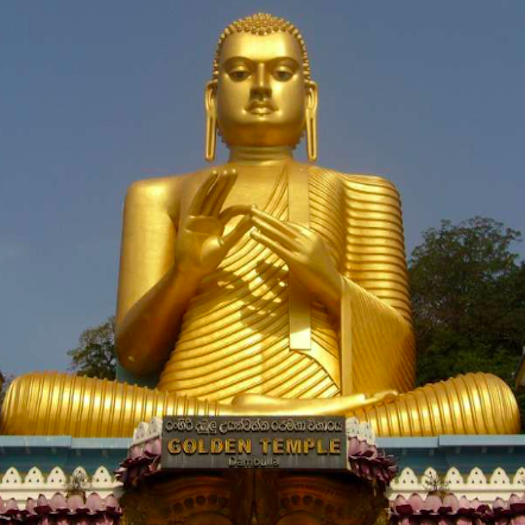

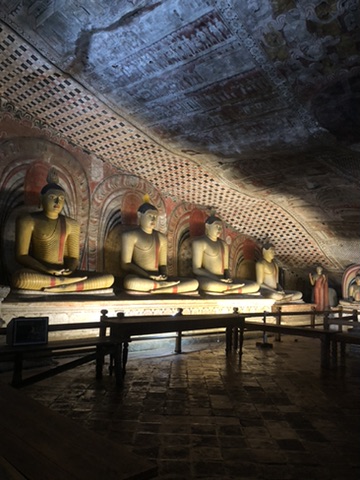
The Dambulla Cave Temples, also known as the Golden Temple of Dambulla, are a remarkable and culturally significant site located in the town of Dambulla in central Sri Lanka. These ancient caves, perched on a massive rock that rises abruptly from the surrounding plains, have been recognized as a UNESCO World Heritage Site due to their historical and religious significance.
History and Origins: The origins of the Dambulla Cave Temples date back to the 1st century BC when King Valagamba, who was in exile, took refuge in these caves. The king, upon reclaiming his throne, transformed the caves into a place of worship, marking the beginning of Buddhist religious significance in this location. Over the centuries, successive kings and devotees have contributed to the development and embellishment of the caves, turning them into a stunning complex of rock temples.
The Cave Complex: The Dambulla Cave Temples consist of five primary caves that house a vast collection of Buddha statues, intricate murals, and religious artifacts. Each cave is a unique and awe-inspiring sanctuary with its own distinct character.
-
- Cave of the Divine King (Devaraja Viharaya): The first cave you encounter upon ascending the steps to the temple complex is dedicated to Lord Buddha. It features a 15-meter-long reclining Buddha statue, surrounded by numerous other Buddha images in various postures.
-
- Cave of the Great Kings (Maharaja Viharaya): This cave is renowned for its grandeur and features a large seated Buddha statue and an impressive assortment of statues of Sri Lankan kings. The walls and ceilings are adorned with frescoes illustrating significant events from Buddhist and Sri Lankan history.
-
- Cave of the Great New Monastery (Maha Alut Viharaya): The third cave, also known as the “Great New Monastery,” houses a seated Buddha statue and is adorned with exquisite paintings that narrate the Jataka tales, stories of the Buddha’s previous lives.
-
- Cave of the Eastern Monastery (Pachima Viharaya): This cave is the smallest of the five but is adorned with striking murals depicting the Buddha’s enlightenment and final sermon.
-
- Cave of the Recumbent Image (Devana Alut Viharaya): The fifth and final cave features a recumbent Buddha statue in a serene reclining posture. The statue is enclosed by a beautifully crafted stone screen.
The Frescoes: The frescoes found in the caves are some of the most remarkable features of the Dambulla Cave Temples. These paintings, dating back centuries, depict scenes from Buddhist stories, historical events, and the lives of the ancient Sinhalese people. The vibrant colors and intricate detailing of the frescoes are a testament to the artistic and cultural heritage of Sri Lanka.
Visiting the Dambulla Cave Temples: When visiting the Dambulla Cave Temples, it’s important to dress modestly, with shoulders and knees covered, as a sign of respect for the religious site. There is an ascent of steep steps to reach the caves, so comfortable footwear is advisable. Additionally, it’s a good idea to bring a flashlight or use the one on your phone to fully appreciate the details in the dimly lit caves.
The panoramic views from the hill upon which the caves are situated are breathtaking, offering a glimpse of the lush Sri Lankan landscape below.
The Dambulla Cave Temples are not only a place of religious significance but also a treasure trove of Sri Lankan history, art, and culture. Their preservation and recognition as a UNESCO World Heritage Site make them a must-visit destination for anyone exploring the rich tapestry of Sri Lanka’s heritage.
Sigiriya Rock Fortress: Sri Lanka’s Majestic Icon

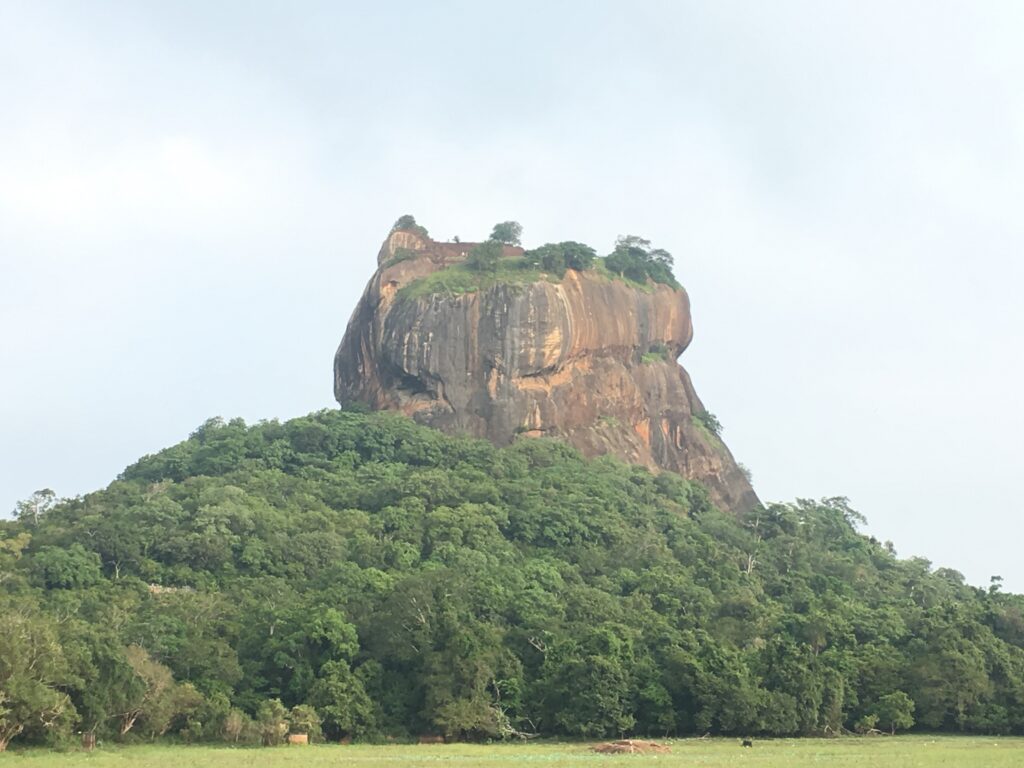
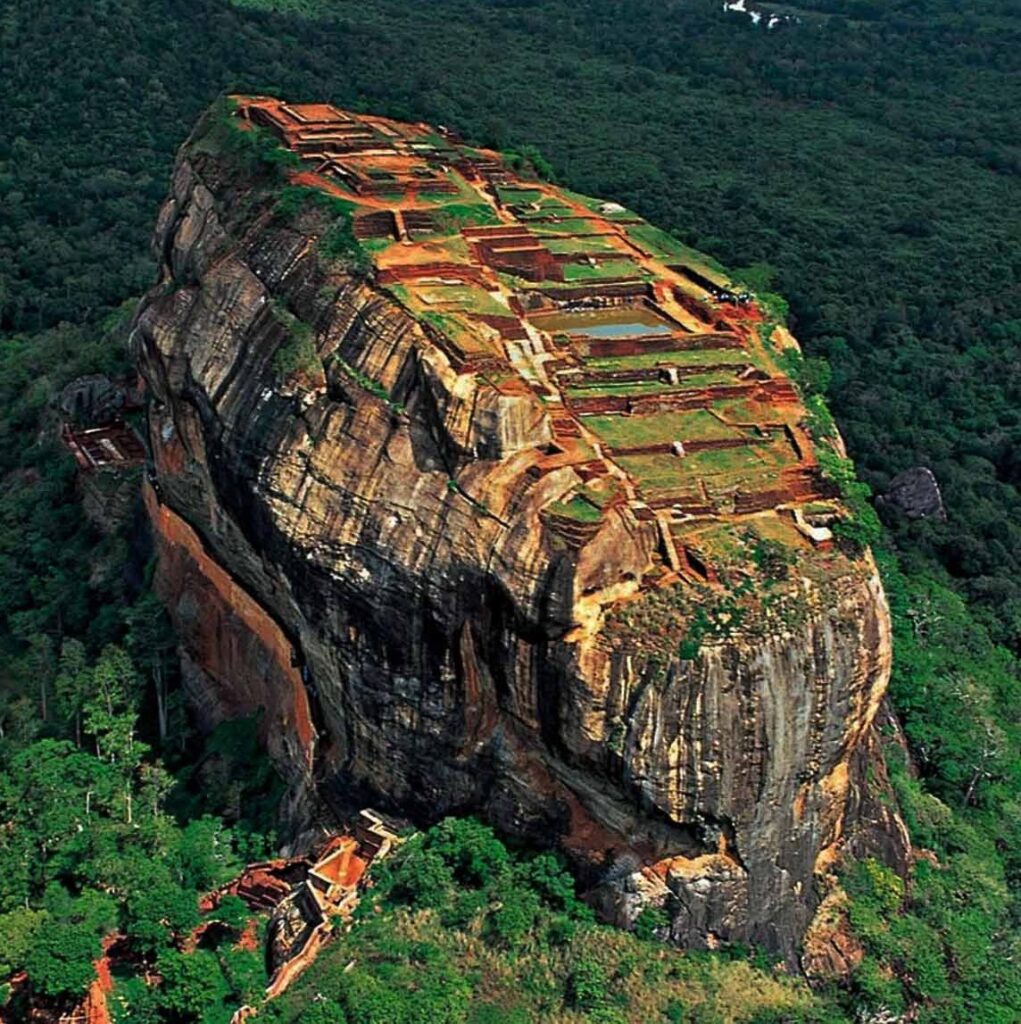
Sigiriya, often referred to as the “Eighth Wonder of the World,” is an iconic and enigmatic rock fortress located in the heart of Sri Lanka’s Cultural Triangle. Rising dramatically from the surrounding plains, this UNESCO World Heritage Site is a testament to ancient engineering and architectural brilliance, as well as a showcase of the island’s rich history and culture.
Historical Significance:
Sigiriya has a storied history that dates back over 1,500 years. It was originally constructed by King Kasyapa in the 5th century AD. The king, who sought to build a fortress impervious to attack, chose this massive rock outcrop as the site for his palace. The complex, surrounded by moats, gardens, and fortifications, was a marvel of its time.
After Kasyapa’s death, Sigiriya became a Buddhist monastery for several centuries. The site is home to several frescoes, depicting beautiful maidens, thought to be either celestial beings or the king’s concubines.
The Architecture and Layout:
Sigiriya’s design is a testament to the ingenuity of ancient Sri Lankan architects. The fortress is divided into several key zones:
-
- The Lion’s Paw Terrace: As you begin your ascent, you’ll encounter two colossal lion paws carved out of the rock. These paws once formed the base of a massive lion-shaped gateway, earning Sigiriya its moniker “Lion Rock.” The ascent to the summit begins here.
-
- The Mirror Wall: En route to the summit, you’ll pass the famous Mirror Wall, which was originally polished to a reflective surface. Visitors from centuries ago inscribed graffiti and poetry on this wall, offering glimpses into their thoughts and impressions of Sigiriya.
-
- Frescoes: The frescoes, located in a sheltered gallery on a rock face, are one of Sigiriya’s most famous features. These paintings depict elegantly adorned maidens and provide a window into the art and aesthetics of the ancient era.
-
- The Summit: At the top of the rock, you’ll find the remnants of Kasyapa’s palace, including a massive stone throne, cisterns, and breathtaking panoramic views of the surrounding landscape. The views extend as far as the eye can see, offering a truly awe-inspiring experience.
Visiting Sigiriya:
Here are some practical tips for visiting Sigiriya:
-
- Timing: Plan to visit Sigiriya early in the morning or late in the afternoon to avoid the midday heat. The site opens at 7 a.m.
-
- Attire: As a sign of respect for this historic and sacred site, it’s advisable to dress modestly, covering your shoulders and knees.
-
- Footwear: Wear comfortable, closed-toe shoes suitable for hiking, as the ascent involves a steep and often uneven path.
-
- Hydration: Bring water with you, as the climb can be physically demanding.
-
- Guided Tours: Consider hiring a local guide who can provide valuable insights into the history and significance of Sigiriya.
-
- Photography: Don’t forget your camera to capture the breathtaking views and historical artifacts.
Sigiriya, with its blend of history, architecture, and natural beauty, is a must-visit destination for travelers exploring Sri Lanka. The journey to the summit is not only an adventure but also an opportunity to connect with the island’s rich heritage and appreciate the achievements of ancient Sri Lankan civilization.
Kandy: The Cultural Heart of Sri Lanka
Kandy, often referred to as the cultural capital of Sri Lanka, is a city that encapsulates the essence of the island’s rich history and traditions. Nestled amidst lush hills and centered around the picturesque Kandy Lake, this vibrant city is a UNESCO World Heritage Site and a must-visit destination for travelers seeking an authentic Sri Lankan experience.
The Temple of the Sacred Tooth Relic:
At the heart of Kandy lies the Temple of the Sacred Tooth Relic (Sri Dalada Maligawa), one of the most revered and significant Buddhist temples in the world. This temple houses a relic believed to be one of Lord Buddha’s teeth. The relic is preserved within a golden casket and is an object of deep veneration for Buddhists.
The temple complex is a magnificent blend of Sinhalese architecture and cultural heritage. As a visitor, you can participate in the daily Puja (worship) ceremonies, which are accompanied by traditional drumming and dance performances. The Temple of the Sacred Tooth Relic provides an opportunity for reflection and an immersion into the spiritual and cultural life of Sri Lanka.
Peradeniya Royal Botanical Gardens:
Just a short drive from the city center, you’ll find the Peradeniya Royal Botanical Gardens, a splendid oasis of lush flora and fauna. These beautifully landscaped gardens span over 147 acres and date back to the era of the Kandyan Kingdom. They are home to a remarkable variety of plants, including towering trees, vibrant orchids, and picturesque palm avenues. A leisurely stroll through these gardens allows you to enjoy the serenity and natural beauty of the surroundings.
Cultural Experiences:
Kandy is the ideal place to immerse yourself in Sri Lankan culture. The city offers numerous opportunities to explore traditional arts and crafts, including the intricate process of handloom weaving and the creation of exquisite Kandyan jewelry. You can also attend cultural performances showcasing Kandyan dance and drumming, offering an authentic taste of the local traditions.
The Esala Perahera:
One of the most famous cultural events in Kandy is the Esala Perahera, a grand annual procession and festival held to honor the Sacred Tooth Relic. This vibrant pageant features beautifully adorned elephants, traditional dancers, and musicians who parade through the streets, making it a visual and sensory spectacle. The Esala Perahera usually takes place in July or August and attracts both locals and tourists from around the world.
Dining and Cuisine:
Kandy is a food lover’s paradise, offering a diverse range of culinary experiences. Don’t miss the opportunity to savor traditional Sri Lankan dishes such as rice and curry, hoppers, and kottu, which are readily available at local restaurants and street vendors. The city also has a selection of international cuisine, making it a dining destination for all tastes.
Surrounding Nature:
Kandy’s lush surroundings offer numerous opportunities for nature enthusiasts. You can explore the Udawatta Kele Sanctuary, a forest reserve that’s perfect for hiking and bird-watching. The nearby Hanthana Mountain Range also provides hiking and trekking trails, offering panoramic views of Kandy and the central highlands.
Nuwara Eliya: Sri Lanka’s Little England
Nuwara Eliya, often referred to as “Little England,” is a charming hill station nestled in the central highlands of Sri Lanka. Known for its cool climate, lush green landscapes, and British colonial architecture, this town is a favorite destination for those seeking respite from the island’s tropical heat. Here, amidst the rolling hills and tea plantations, you’ll discover a unique blend of natural beauty, cultural history, and outdoor activities.
Tea Plantations and Factories:
Nuwara Eliya is renowned for its tea plantations, and a visit to one of the local tea factories is a must. Sri Lanka is one of the world’s largest tea producers, and the region’s Ceylon tea is celebrated for its quality. Take a guided tour to learn about the entire tea-making process, from plucking the leaves to the tea-tasting rituals. You can sample a variety of teas and even purchase your favorite blends as souvenirs.
Lush Gardens and Parks:
The town is home to several beautifully maintained gardens and parks. Victoria Park, a well-kept garden, is a perfect spot for a leisurely stroll and bird-watching. The Hakgala Botanical Gardens, situated at a higher elevation, feature a stunning collection of indigenous and exotic plants.
Gregory Lake:
A picturesque lake located in the heart of Nuwara Eliya, Gregory Lake is an ideal place for relaxation and recreation. You can take a leisurely boat ride, enjoy a lakeside picnic, or simply soak in the serene views of the surrounding hills.
Hiking and Trekking:
The surrounding hills offer numerous opportunities for hiking and trekking. The Horton Plains National Park, about an hour’s drive from Nuwara Eliya, is a popular destination for nature enthusiasts. The park is home to the famous “World’s End” viewpoint, offering breathtaking panoramic views. The region also boasts numerous trails through lush forests and rolling hills, making it an excellent destination for outdoor adventures.
Golf:
Nuwara Eliya Golf Club is one of the oldest golf clubs in Sri Lanka, with a picturesque course that’s been enjoyed by golf enthusiasts for over a century. If you’re a golfer, this is a fantastic opportunity to tee off amidst the cool climate and stunning scenery.
Colonial Architecture:
The town’s colonial history is evident in its architecture, with many British-style buildings, including the post office and the Grand Hotel. Strolling through the town, you’ll feel like you’ve stepped back in time to the British colonial era.
Festivals and Events:
Nuwara Eliya hosts several annual events, including the Nuwara Eliya Season, an occasion for horse races, golf tournaments, and other sports. The town also celebrates the Sinhalese and Tamil New Year with great enthusiasm and colorful festivities.
Cool Climate:
Due to its high elevation, Nuwara Eliya enjoys a cooler climate compared to the rest of Sri Lanka. Evenings and mornings can be quite chilly, so be sure to pack accordingly.
Ella: Sri Lanka’s Enchanting Hill Country Gem
Nestled in the central highlands of Sri Lanka, Ella is a small but enchanting town surrounded by breathtaking natural beauty. With its cool climate, verdant landscapes, and an array of outdoor adventures, Ella has become a favored destination for travelers seeking a tranquil escape and an opportunity to immerse themselves in nature.
Scenic Train Journey:
Many visitors to Ella start their journey with the iconic train ride from Nuwara Eliya. The route takes you through some of the most spectacular landscapes in Sri Lanka, including lush tea plantations, misty valleys, and dense forests. The train ride is an adventure in itself, with opportunities to hang out of the open doorways and capture stunning photographs.
Hiking and Trekking:
Ella is a hiker’s paradise, offering a range of trails that cater to various skill levels. Some of the most popular treks include:
-
- Ella Rock: A challenging hike that rewards you with panoramic views of the surrounding hills, valleys, and tea plantations.
-
- Little Adam’s Peak: A relatively easy trek that leads to a summit with breathtaking vistas, particularly during sunrise and sunset.
-
- Nine Arch Bridge: A leisurely walk to this architectural marvel, best experienced when a train passes over it, creating a picturesque scene.
-
- Bambaragama Falls: A hike that takes you to a stunning waterfall, allowing you to cool off in its refreshing pool.
Demodara Loop: An engineering marvel, this train loop is close to Ella, and watching the train traverse this circular track is a unique and fascinating sight.
Ravana Falls:
Ravana Falls, one of Sri Lanka’s widest waterfalls, is located near Ella. The falls are named after the legendary demon king Ravana from the Hindu epic Ramayana. You can visit the base of the falls and take a refreshing dip in the pool below.
Adisham Monastery:
For a taste of colonial history, consider a visit to Adisham Monastery. This former residence of a British planter has been transformed into a Benedictine monastery. The picturesque location, with its well-maintained gardens, offers a serene and contemplative atmosphere.
Village Life and Cultural Experiences:
Ella provides opportunities to engage with the local community and experience rural life. You can participate in village tours, cooking classes, and even enjoy a traditional Sri Lankan meal with a local family, offering you an authentic insight into Sri Lankan culture.
Nightlife:
Ella may be a small town, but it doesn’t lack vibrant nightlife. Local bars and restaurants often host live music, open mic nights, and cultural performances, making it a great place to socialize and enjoy some evening entertainment.
Cuisine:
Ella boasts a variety of dining options, ranging from local Sri Lankan cuisine to international dishes. Don’t miss the opportunity to savor traditional Sri Lankan specialties such as rice and curry, hoppers, and kottu.
Yala National Park: Exploring the Wild Side of Sri Lanka
Yala National Park, situated in the southeastern region of Sri Lanka, is a haven for wildlife enthusiasts and nature lovers. This sprawling expanse of pristine wilderness is the country’s most renowned and visited national park, celebrated for its incredible biodiversity and the opportunity to witness an array of wildlife species in their natural habitat.
Key Highlights:
-
- Wildlife Safaris: Yala National Park is famous for its wildlife safaris, offering the chance to encounter a wide range of creatures, including the majestic Sri Lankan leopard. Yala has one of the highest leopard densities in the world, making it a prime location for spotting these elusive big cats. Other common sightings include elephants, sloth bears, crocodiles, and an array of bird species.
-
- Biodiversity: Yala’s diverse ecosystems, which encompass dry forests, grasslands, wetlands, and coastal regions, support a rich variety of flora and fauna. The park is home to over 200 bird species, making it a birdwatcher’s paradise. You may also encounter herds of spotted deer, sambar deer, wild boar, and water buffalo.
-
- Eco Systems: The park’s varied landscapes, including lagoons, rocky outcrops, and dense forests, provide distinct habitats for different species. Yala’s coastline is particularly noteworthy, with pristine beaches and tidal pools adding to the park’s unique charm.
-
- Yala Block 1: The most frequently visited section of the park is Block 1, known for its high density of leopards and other wildlife. This area also features the picturesque Buthuwa lagoon.
-
- Kumana National Park: Adjacent to Yala, Kumana National Park is a birdwatcher’s paradise, with an array of migratory and indigenous birds, especially during the nesting season from April to July.
Practical Tips:
-
- Safari Timing: The best times for wildlife sightings in Yala are during the early morning and late afternoon. Safari jeeps are available for hire, and it’s advisable to book one with a knowledgeable guide who can enhance your wildlife-viewing experience.
-
- Pack Essentials: When heading on a safari in Yala, don’t forget to bring essentials like binoculars, a camera with a good zoom lens, sunscreen, a hat, and plenty of drinking water.
-
- Respect Nature: While enjoying the natural beauty and wildlife, it’s crucial to respect the environment and adhere to responsible and ethical wildlife-watching practices. Maintain a safe distance from the animals and adhere to park regulations.
-
- Lodging: Yala offers a range of accommodations, from rustic campsites to luxurious safari lodges. It’s advisable to book your accommodation well in advance, especially during peak tourist seasons.
-
- Weather: The park can get quite hot during the day, so wear lightweight clothing and use sunscreen. However, the nights can be cooler, so pack accordingly.
Galle: A Colonial Gem on Sri Lanka’s Southern Coast
Galle, a picturesque coastal city on the southern tip of Sri Lanka, is a charming blend of old-world colonial history, stunning seaside beauty, and a thriving local culture. With its well-preserved Dutch colonial architecture, historic fort, inviting beaches, and a vibrant arts scene, Galle is a destination that captivates travelers with its unique character and rich heritage.
Galle Fort: A UNESCO World Heritage Site
The centerpiece of Galle’s allure is the Galle Fort, a UNESCO World Heritage Site. This 17th-century fort, originally built by the Portuguese and later extensively fortified by the Dutch, is a testament to the colonial legacy of the region. It’s a delightful labyrinth of cobblestone streets, lined with colonial-era buildings, charming boutique shops, art galleries, and inviting cafes. The fort’s massive ramparts, with their breathtaking sea views, offer an excellent vantage point for gazing out at the Indian Ocean.
Historical Significance:
Galle Fort is a living testament to the colonial history of Sri Lanka. Visitors can explore historic landmarks within the fort, including the Dutch Reformed Church, All Saints Church, and the Old Dutch Hospital, which has been converted into a lively shopping and dining precinct. The fort’s architectural charm, punctuated by the iconic lighthouse, creates a unique ambiance that transports visitors to a bygone era.
Museums and Galleries:
Galle boasts several museums and galleries that provide deeper insights into the region’s history and art. The Maritime Archaeological Museum, Galle National Museum, and Historical Mansion Museum are worth a visit. The city also fosters a thriving contemporary arts scene, with numerous galleries showcasing the work of local and international artists.
Beaches and Leisure:
Galle’s coastal setting invites travelers to relax on pristine sandy beaches. Unawatuna, one of the nearby beaches, offers crystal-clear waters and vibrant coral reefs, making it an ideal destination for snorkeling and swimming. Mirissa Beach, known for its stunning sunsets and whale-watching opportunities, is also easily accessible from Galle.
Cuisine:
Galle offers a diverse culinary experience. Seafood lovers will relish the opportunity to savor fresh catches from the ocean. The city is also known for its authentic Sri Lankan cuisine, including rice and curry, hoppers, and kottu. Several cozy cafes and restaurants within Galle Fort cater to a variety of tastes.
Local Markets:
The city hosts bustling local markets where you can explore and purchase a wide array of goods, including spices, textiles, and traditional crafts. The Galle Fort market is especially popular, offering a selection of artisanal products, jewelry, and clothing.
Galle Literary Festival:
Galle is renowned for its annual Galle Literary Festival, which draws renowned authors, poets, and literary enthusiasts from around the world. The festival features engaging discussions, book launches, and other literary events against the backdrop of the fort’s historic architecture.
Practical Tips:
-
- Sightseeing: Exploring the Galle Fort is best done on foot. Wear comfortable shoes and lightweight clothing, and carry water, sunscreen, and a hat.
-
- Accommodation: Galle offers a variety of accommodations, ranging from boutique hotels within the fort to beachfront resorts. It’s advisable to book accommodations in advance, particularly during the peak tourist season.
-
- Respect Cultural Norms: While Galle is a cosmopolitan destination, it’s important to be mindful of local customs and dress modestly, especially within the fort area.
Book this Tour of Sri Lanka 8 day Itinerary on our Go Tours Lanka website and read our tour reviews on TripAdvisor

